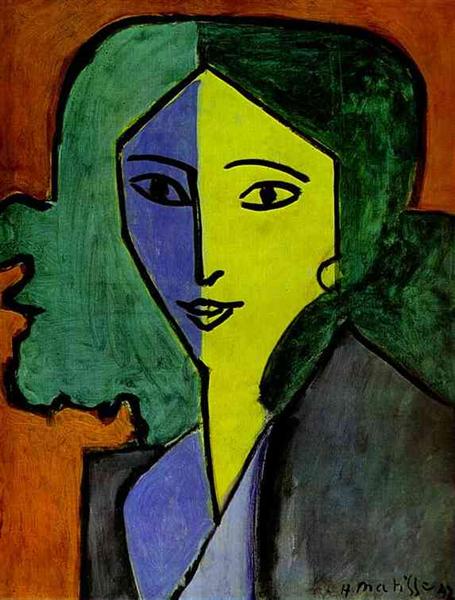Description
Henri Matisse, a colossal figure in the history of modern art, left an indelible mark on the art world with his innovative use of color and his ability to capture the essence of his subjects in a way that feels both intimate and universal. The work "Portrait of Lydia Delectorskaya" from 1947 is a clear example of his mastery and unique style.
In this work, Matisse depicts Lydia Delectorskaya, his assistant, muse, and collaborator for many years. Delectorskaya was not only a key figure in his personal and professional life but also appeared in numerous of his works, becoming almost an extension of the artist's creative exploration. In this portrait, she appears depicted with deceptive simplicity that requires closer examination to unravel its complexities.
The painting, with dimensions of 46x60 cm, is a masterful study in the use of color and line, two of the distinctive elements of Matisse's style. The background is composed of a vibrant blue that gives depth and contrast to the model's soft skin tone. This background not only frames Lydia but also seems to make her float in an undefined space, creating a sense of timelessness and absolute focus on the subject.
Lydia's face is outlined with strokes that could be considered rough if not for the apparent intention and clarity with which Matisse manages to convey her countenance. Her eyes, of an almost ethereal blue tone, look directly at the viewer, establishing a direct and powerful connection. This element of visual confrontation is a characteristic that Matisse handled with exceptional skill, humanizing the model and breaking the barrier between the artwork and the observer.
The choice of colors is typically Matissean, with a bold and unconventional use that nonetheless seems perfectly natural. Here, cool tones predominate not only in the background but also in the details of Lydia's clothing, which seems to suggest a serene and contemplative environment. The lines of the clothing are simple but effective, suggesting the contour of her figure without the need for too many details. This simplified approach is characteristic of Matisse's later works, in which he sought the pure essence of his subjects rather than a detailed representation.
"Portrait of Lydia Delectorskaya" also shows how Matisse, even in more intimate and less grandiose works, managed to maintain a balance between abstract design and figural portraiture. Lydia's serenity and calm are palpable, conveying a peace that was Matisse's goal in many of his later works. It is a portrait that invites contemplation, not only of Lydia's figure but also of Matisse's artistic ingenuity and visual philosophy.
Through works like this, Henri Matisse continued to revolutionize art until his final years, rejecting the rigidity of academicism and embracing a freer and more emotional approach to color and form. In "Portrait of Lydia Delectorskaya", we see not only a portrait of a woman but also a testament to the symbiotic relationship between the artist and his muse, encapsulated in a visual language that has left an indelible mark on the history of art.

